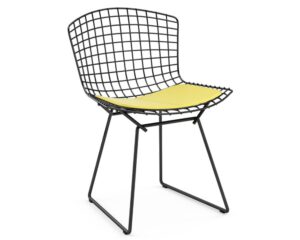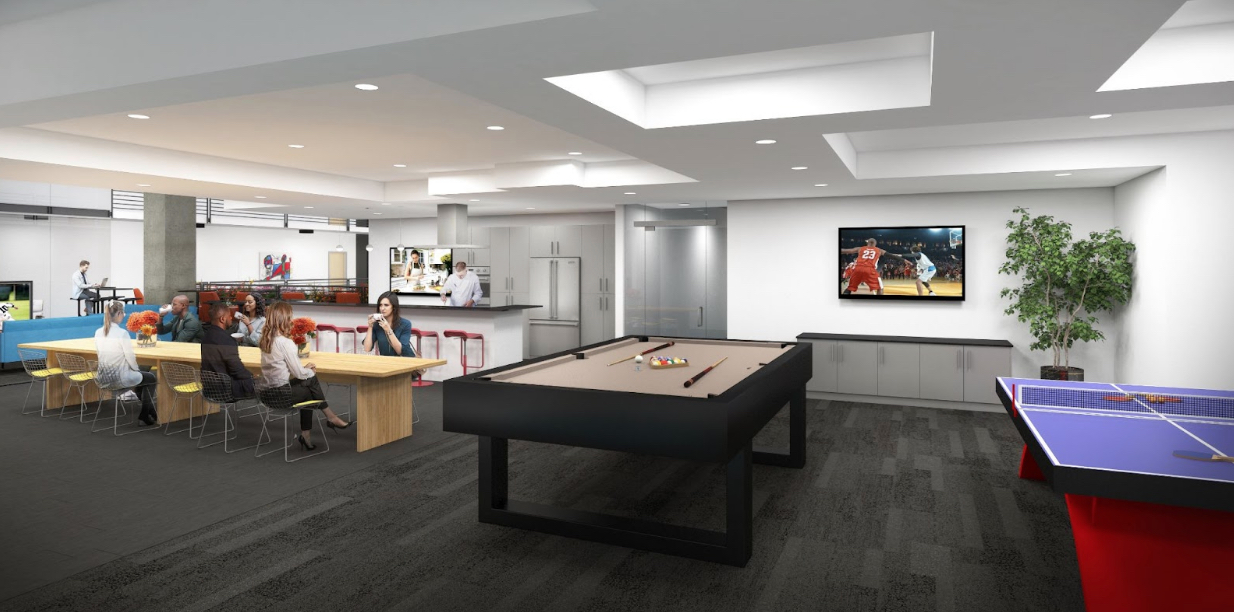Our love of mid-century classic furniture can be found throughout all of the Optima communities. And with our soft spot for iconic seating, it’s no surprise that the famed Bertoia Side Chair is a staple in many of our amenity spaces. Let’s take a closer look.
About Harry Bertoia
Born in San Lorenzo, Italy in 1915, Bertoia built an international reputation as an artist, sound art sculptor and modern furniture designer. After leaving his home at the age of 15 to join his older brother Oreste in Detroit, Harry embarked on a career that centered on the exploration of modernist ideas and ideals, often in collaboration with some of the greatest thinkers and visionaries of that era.
In 1936, a one-year scholarship to the School of the Detroit Society of Arts and Crafts allowed Harry to study painting and drawing. He entered and placed in many local art competitions, said to be the most awarded student up until that time. The following year, another scholarship took him to the Cranbrook Academy of Art in Bloomfield Hills, Michigan. Working among some of the most famous artists and designers of the modernist age, including Eero and Eliel Saarinen, Charles and Roy Eames and Florence Knoll, Bertoia’s creativity and mastery of materials flourished.
Bertoia as Furniture Designer
Bertoia was first exposed to furniture design at Cranbrook when Eero Saarinen and Charles Eames entered and won the Organic Furniture Design Competition sponsored by the Museum of Modern Art. In fact, Bertoia developed his initial chair design ideas while working with Charles Eames and others in California in the late 1940s, which he later incorporated into his work.
Bertoia eventually left Eames to join the Point Loma Naval Electronics Laboratory. While there, he learned how to study the human body to design control panels and knobs that focused on comfort for reach and grip. This sensitivity to ergonomics contributed significantly to Bertoia’s fascination with designing well-fitting practical chairs.
In 1950, at the invitation of former classmate Florence Knoll and her husband Hans, Harry moved to eastern Pennsylvania to work at their emergent furniture company Knoll, Inc. Florence had seen Harry’s work at Cranbrook, heard he had left Eames, and knew that he had enormous promise as a furniture designer. The Knolls offered him the opportunity to design what he wished with full credit and complete recognition of his work, which was their policy with all designers.

About the Bertoia Side Chair
Once on staff at Knoll, Bertoia was asked to develop hospital furniture, but he preferred to work with healthy bodies. He gravitated towards metal as his material of choice, and he continued to experiment with it until he landed on the concept of the wire grid, which could be shaped at will. with it until arising at the wire grid concept that could be shaped at will to conform to the human body. This was a radical departure from the use of rigid wood, which was characteristic of the late 1940s and early 1950s furniture. He not only created the airy welded metal design of the chairs, but also devised the production molds used for mass manufacture.
Knoll produced the first Bertoia chairs in 1952 — an amazing collection of furniture that reflects a profoundly beautiful study in space, form and function. As with other designers of his time, including Mies van der Rohe, Bertoia found infinite elegance in an industrial material, elevating it beyond its utility into a work of art.
Today, the Bertoia collection remains one of the great achievements of mid-century modern furniture design by one of the master sculptors of the last century and a proud part of the Knoll heritage.

